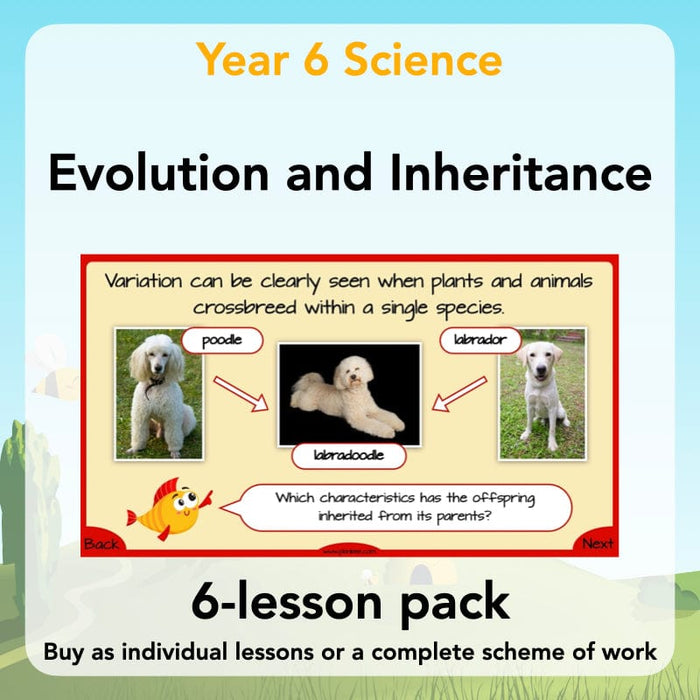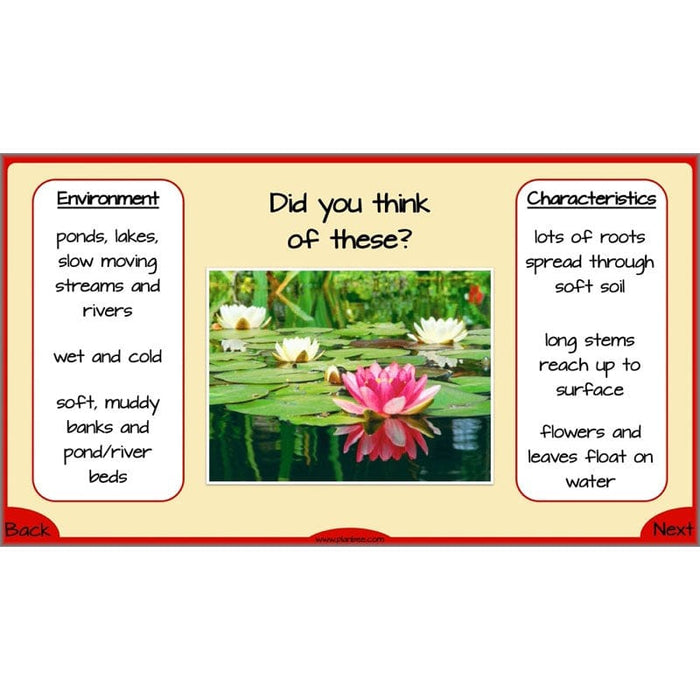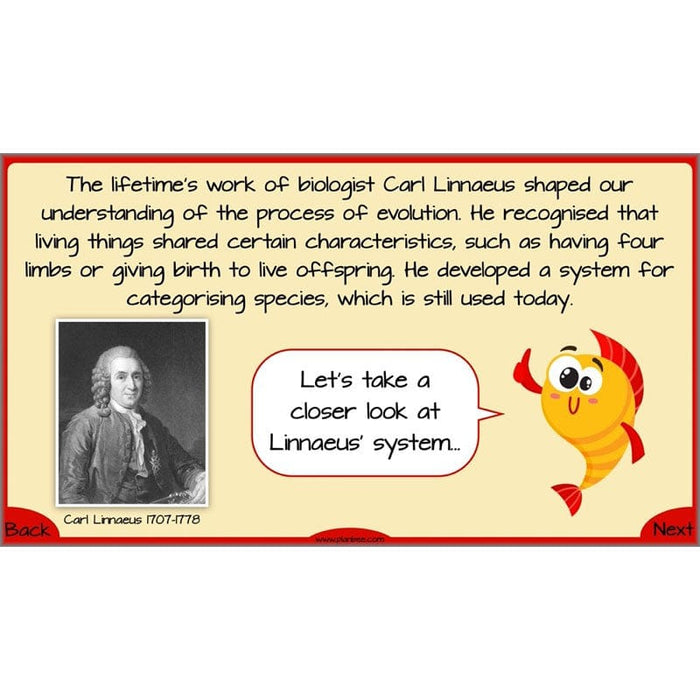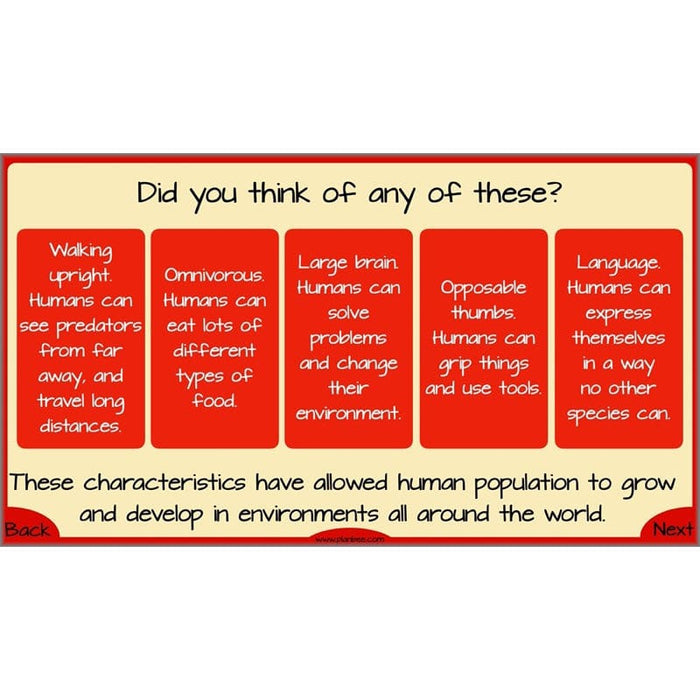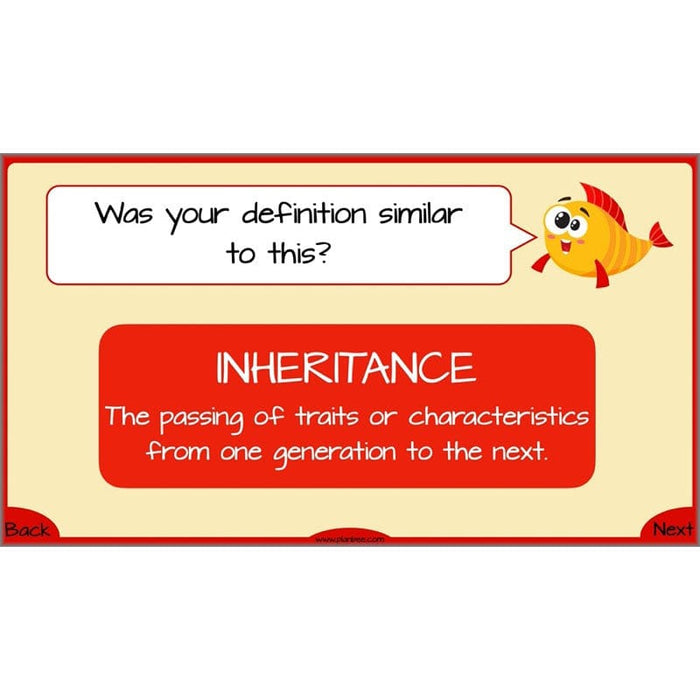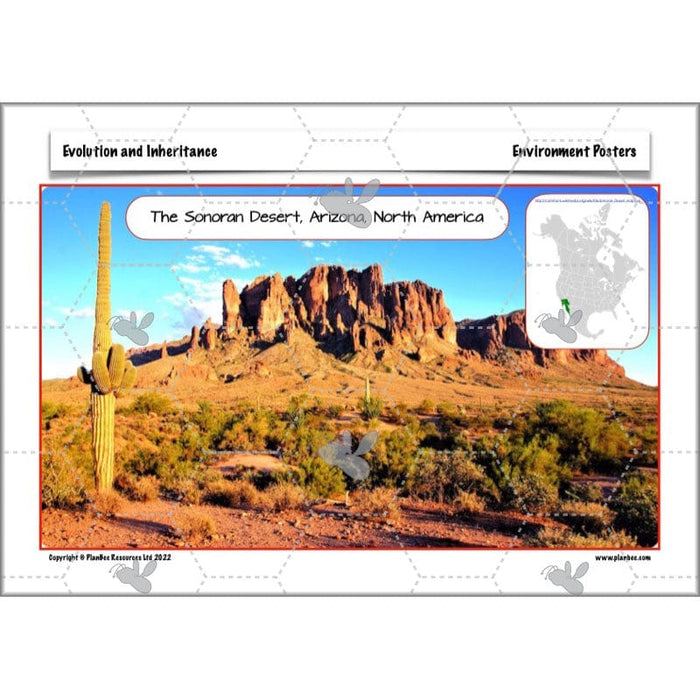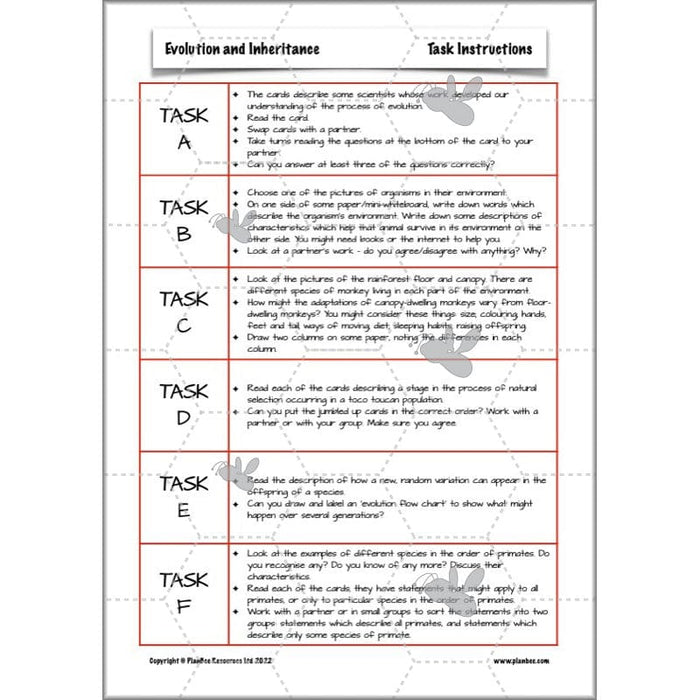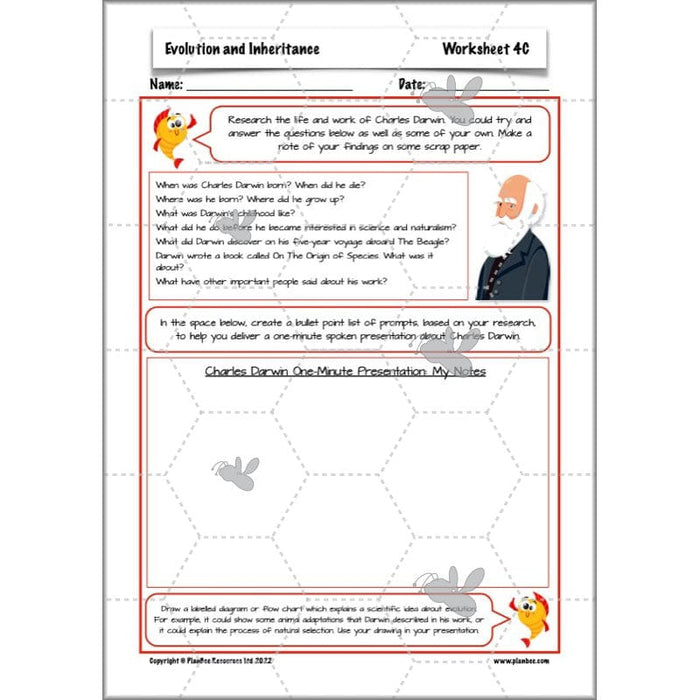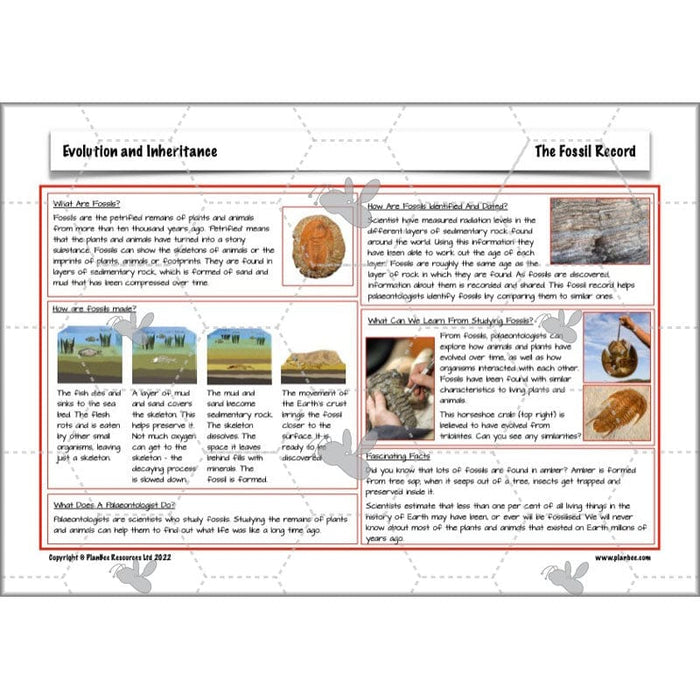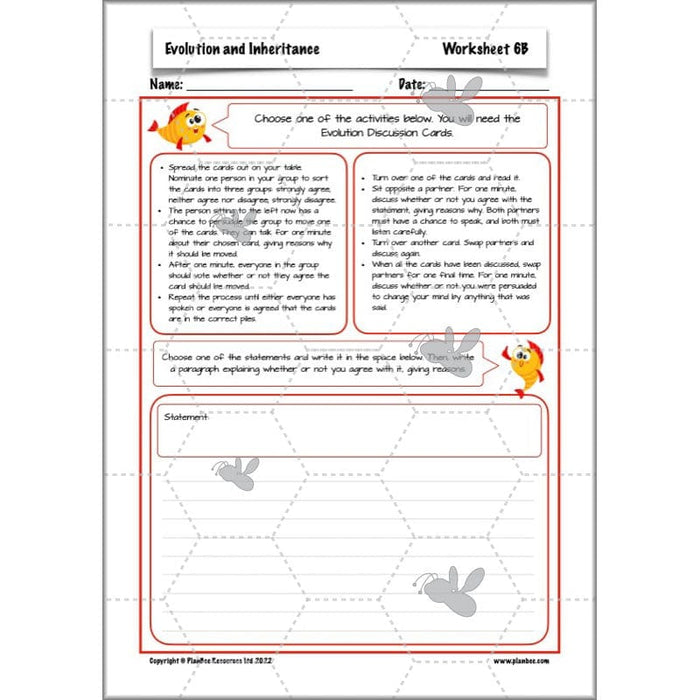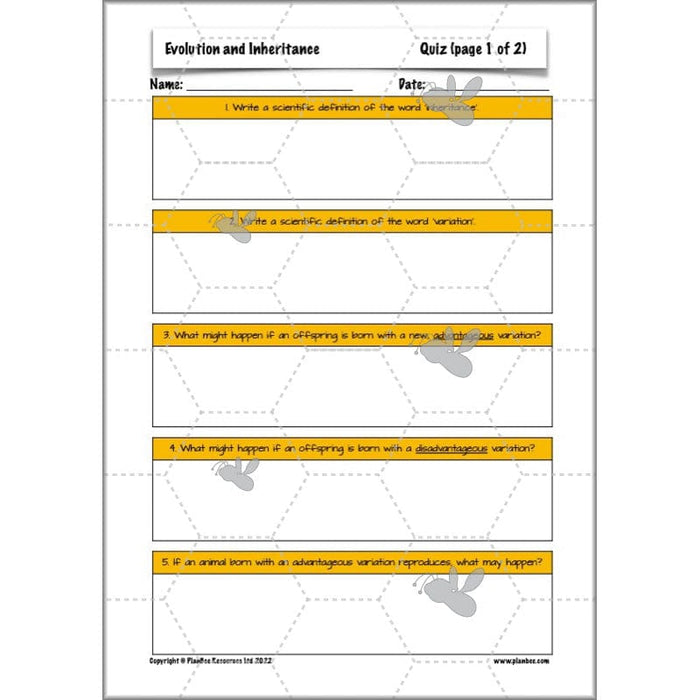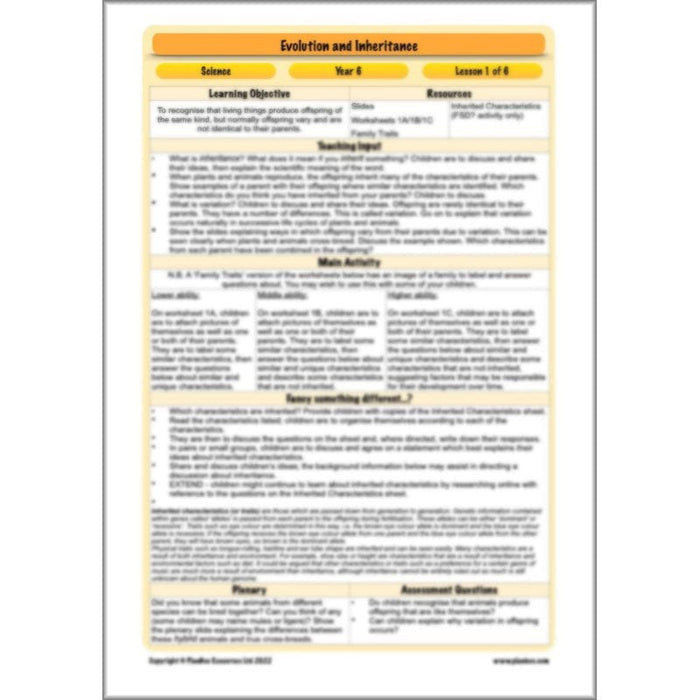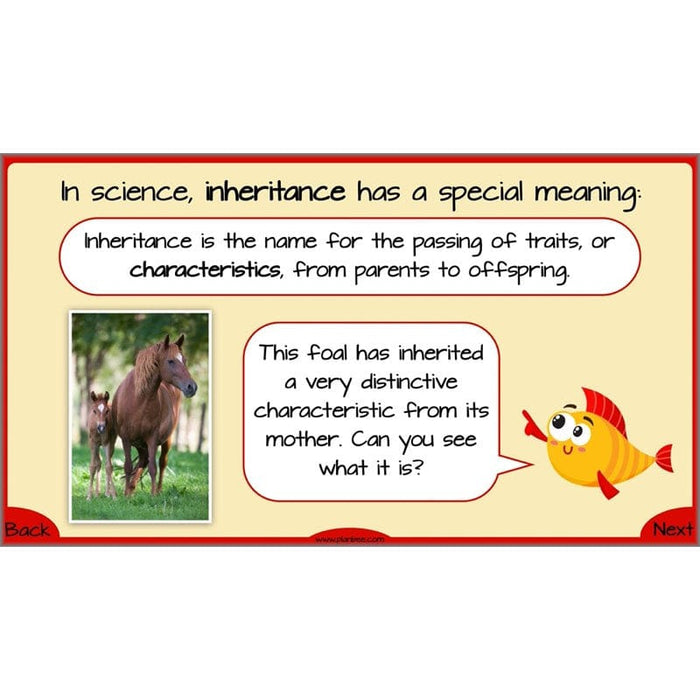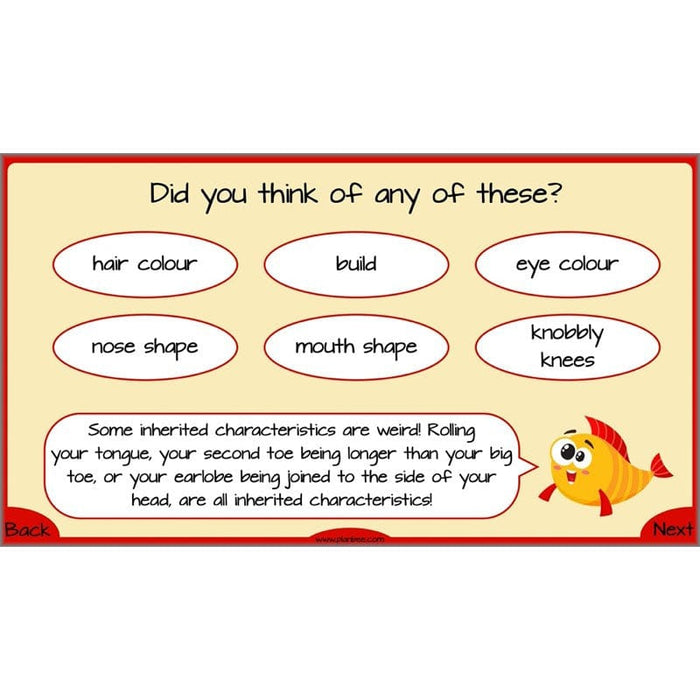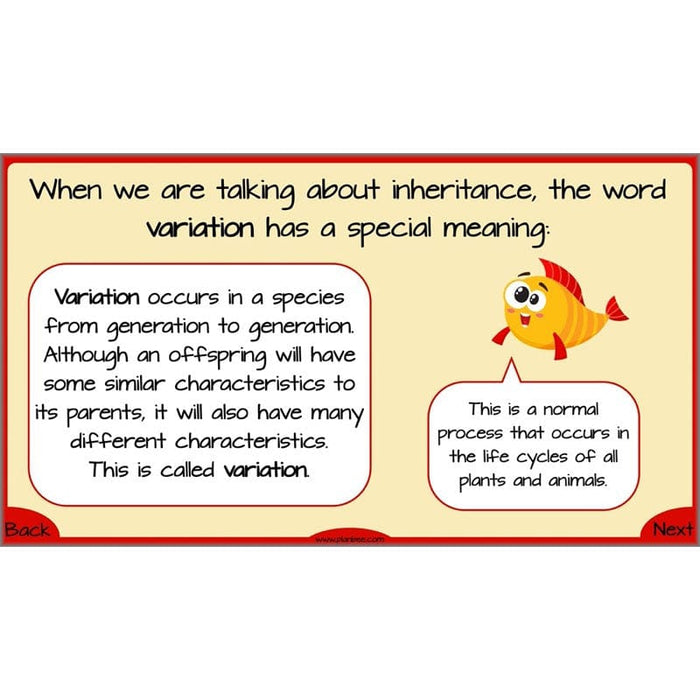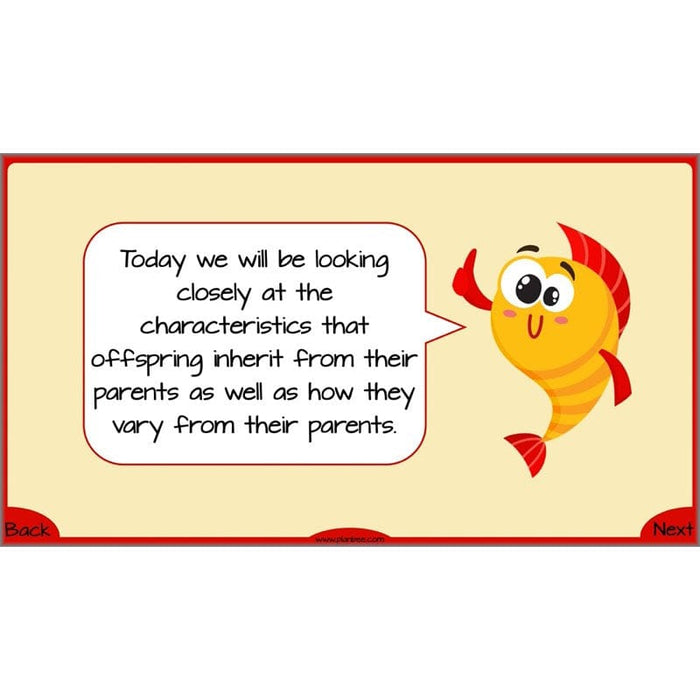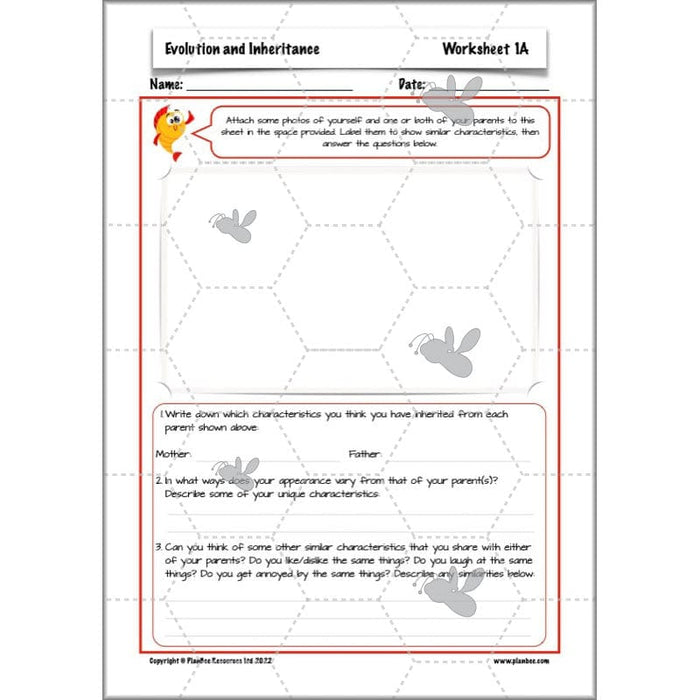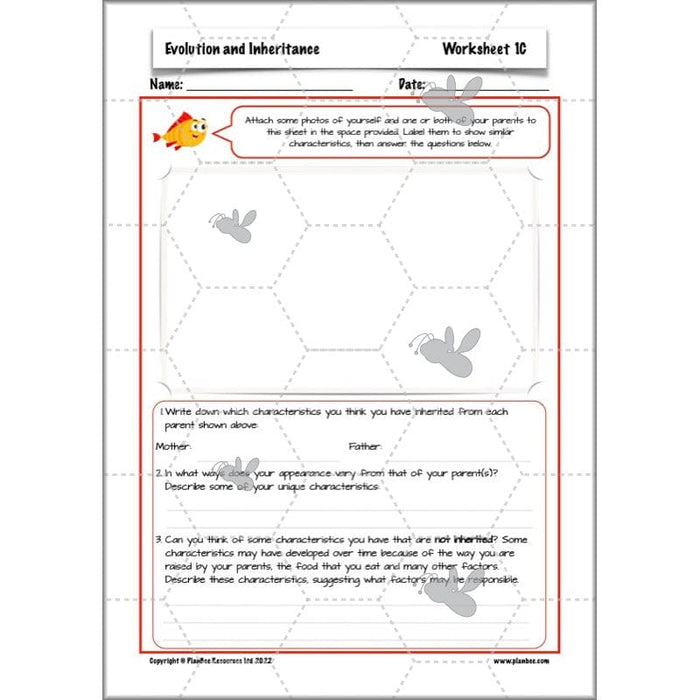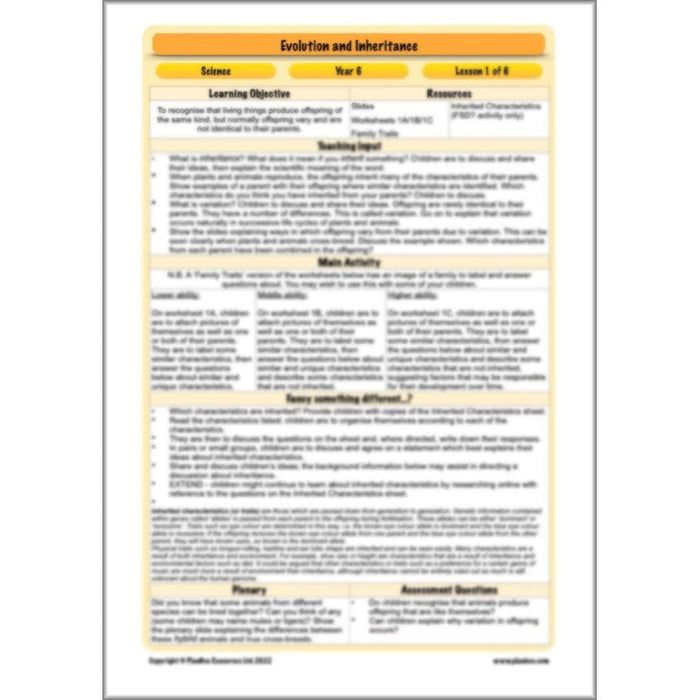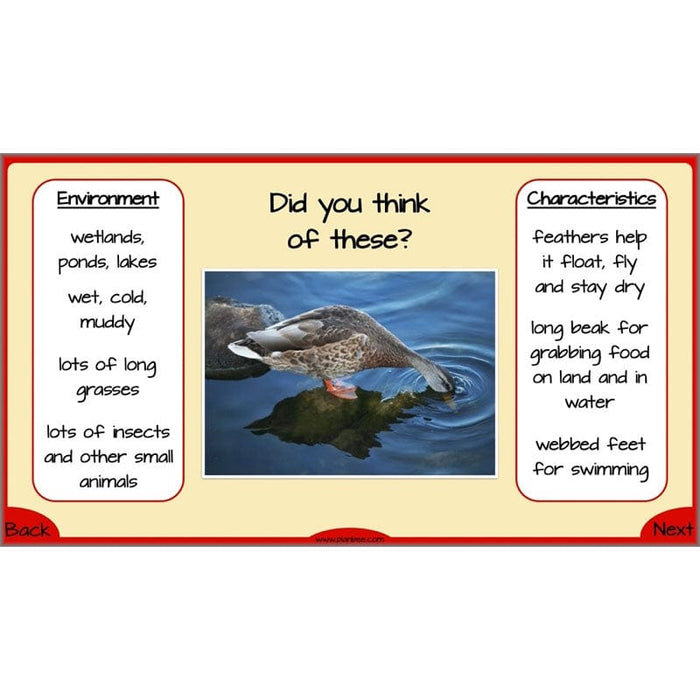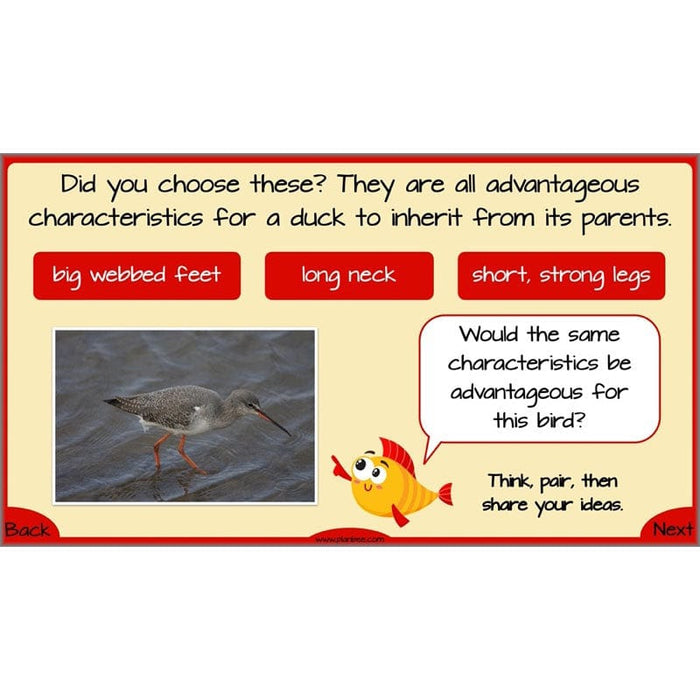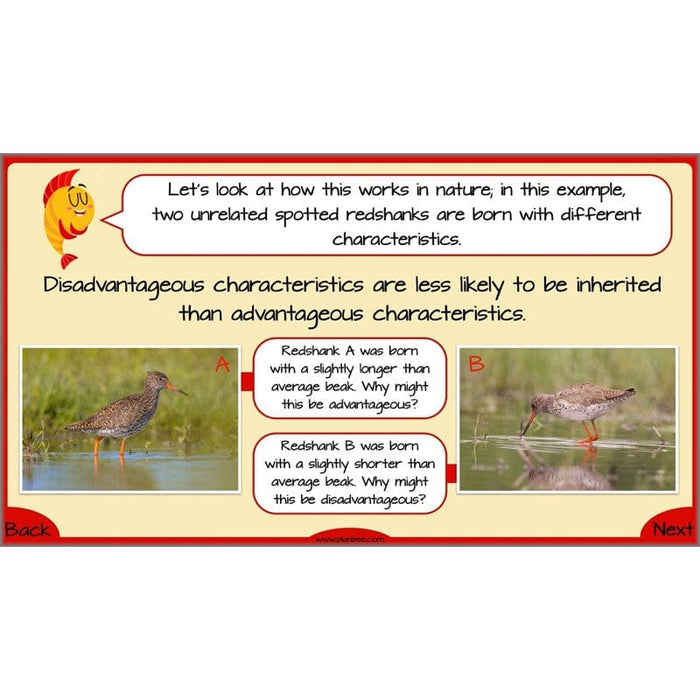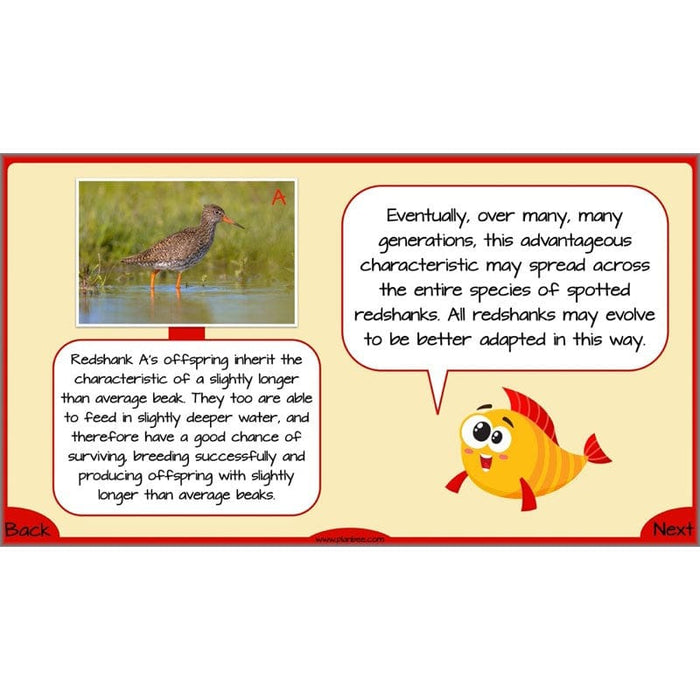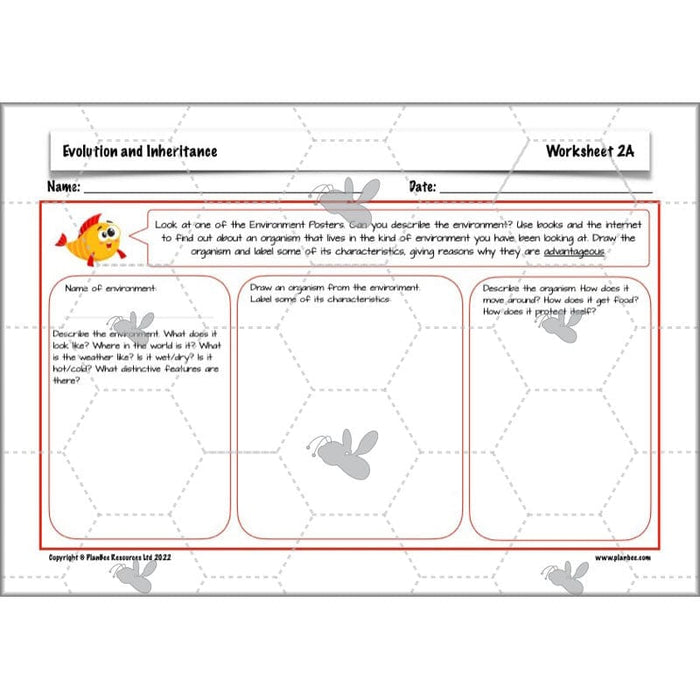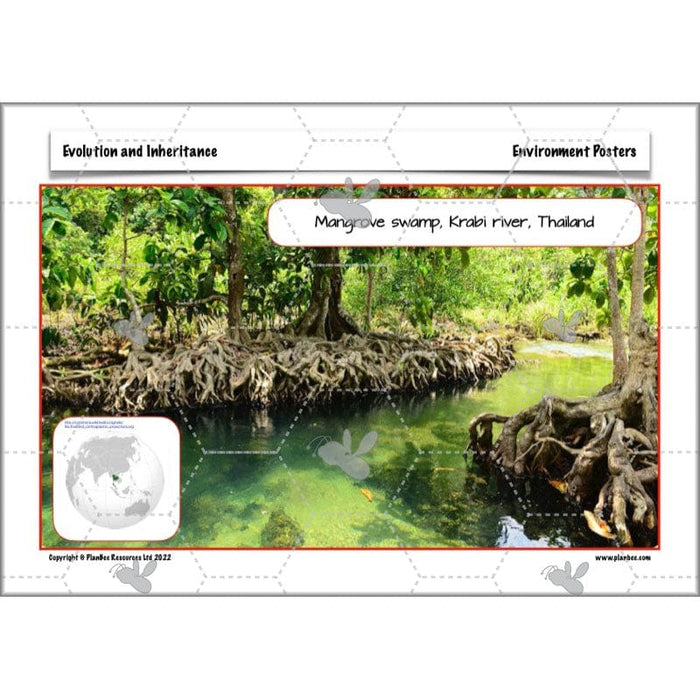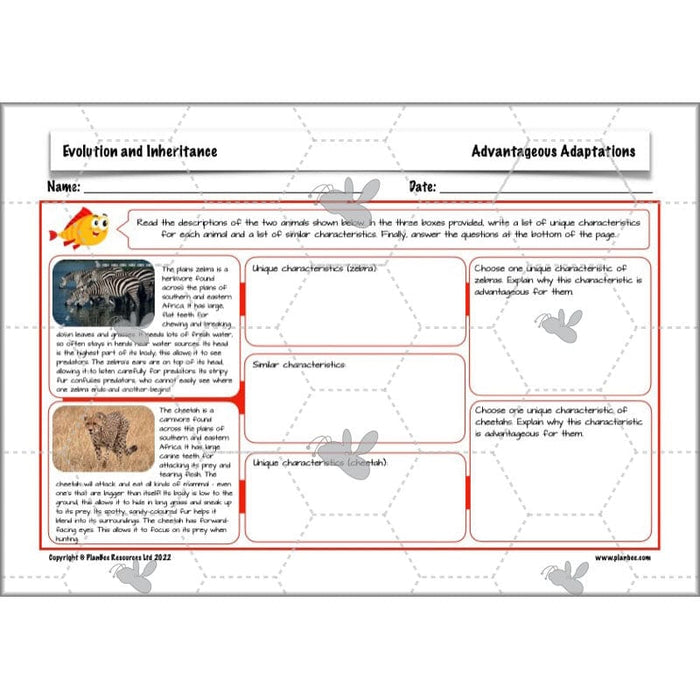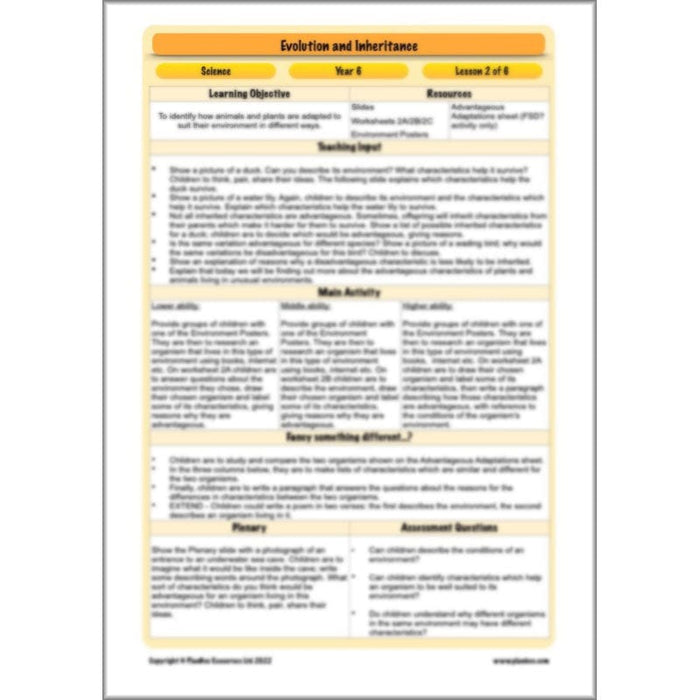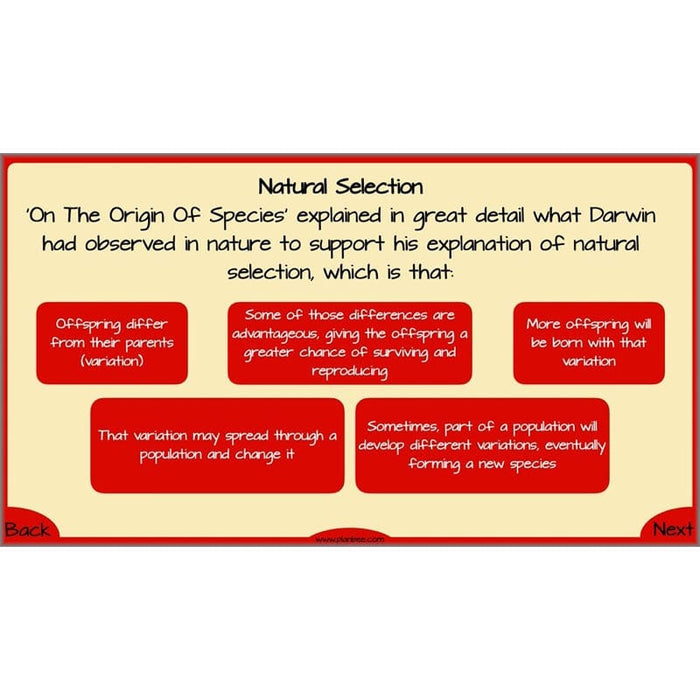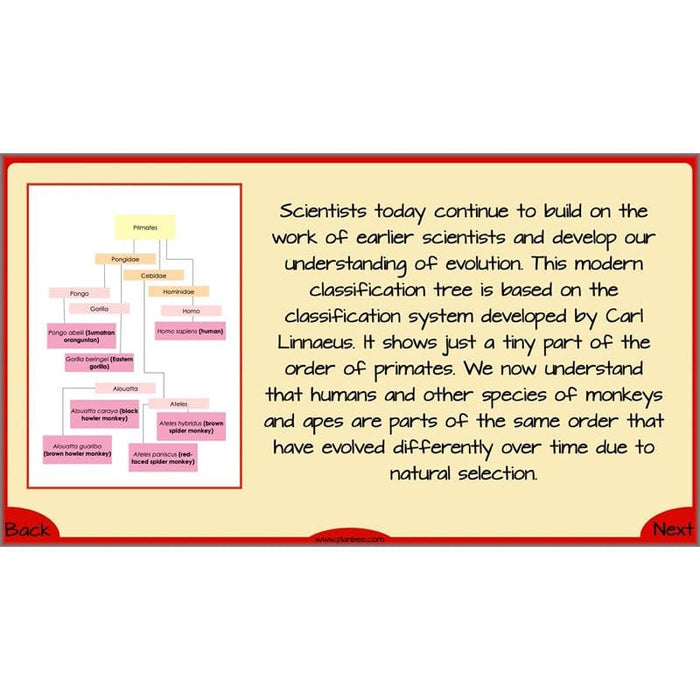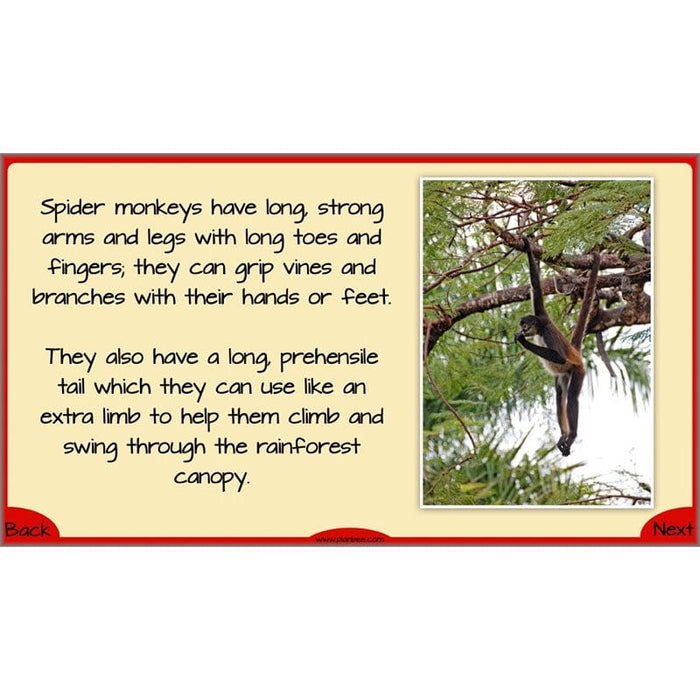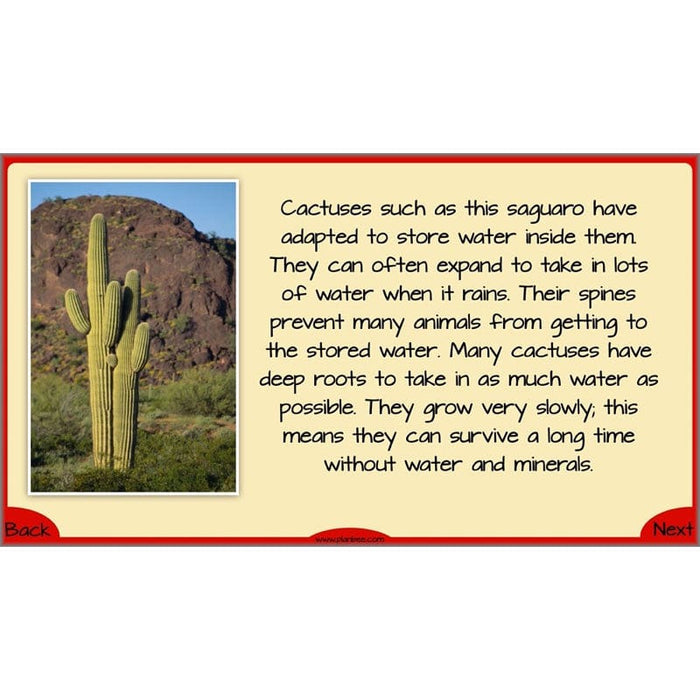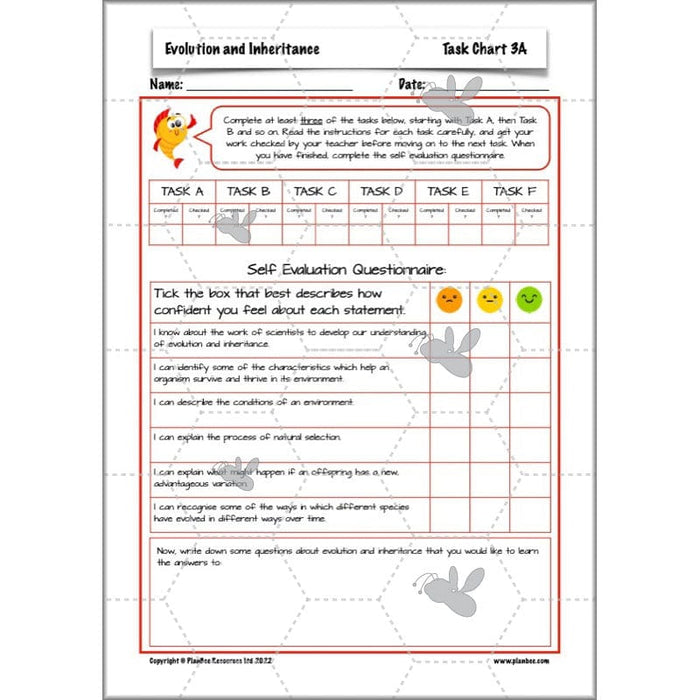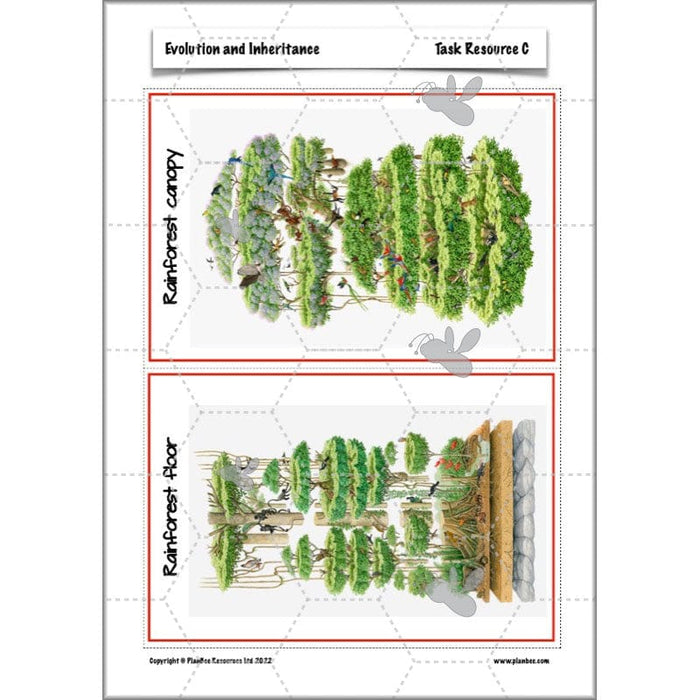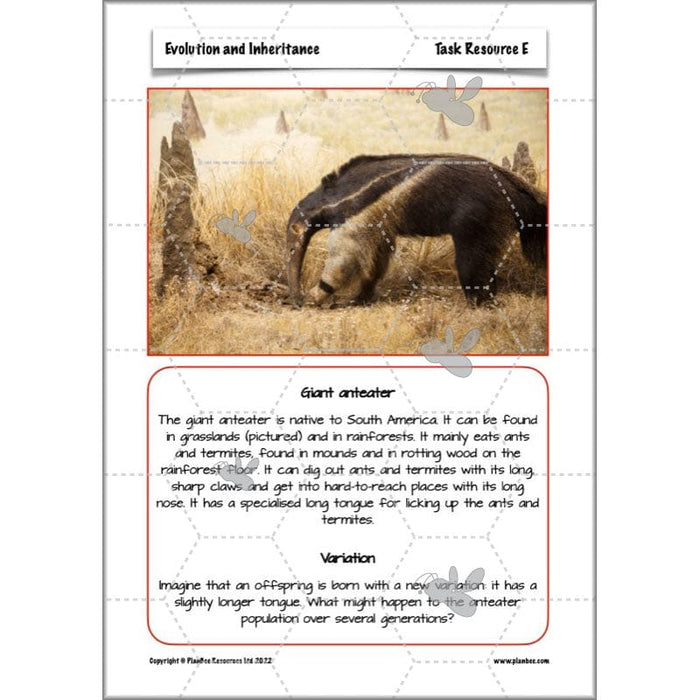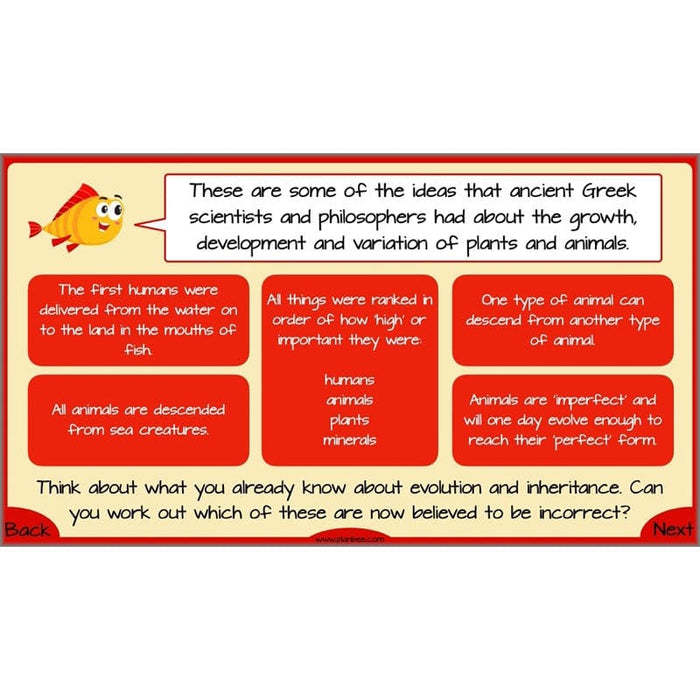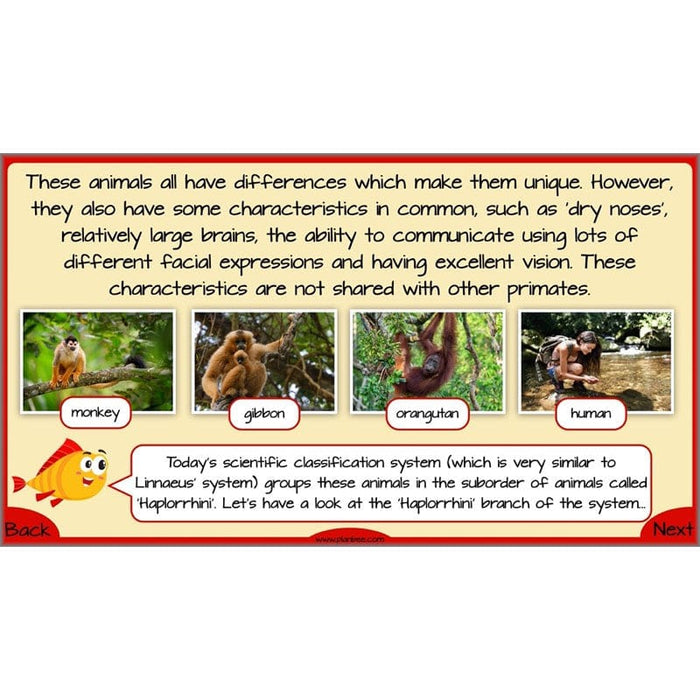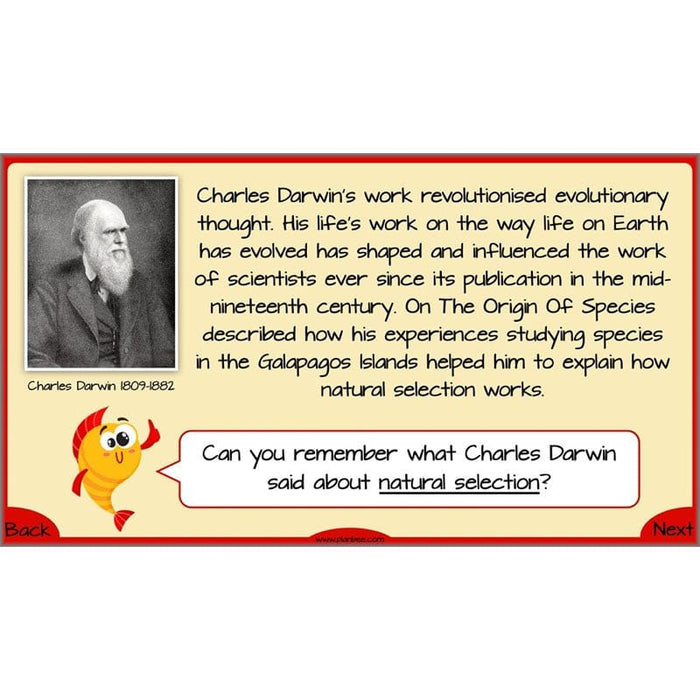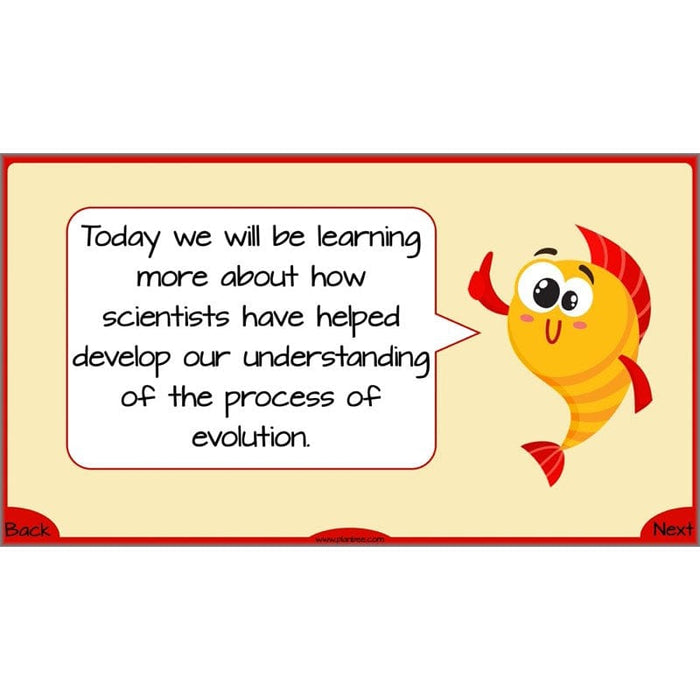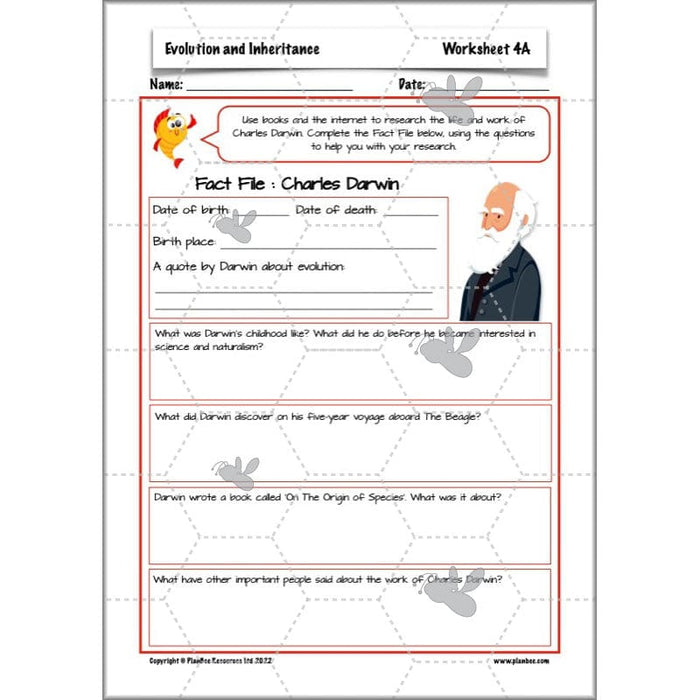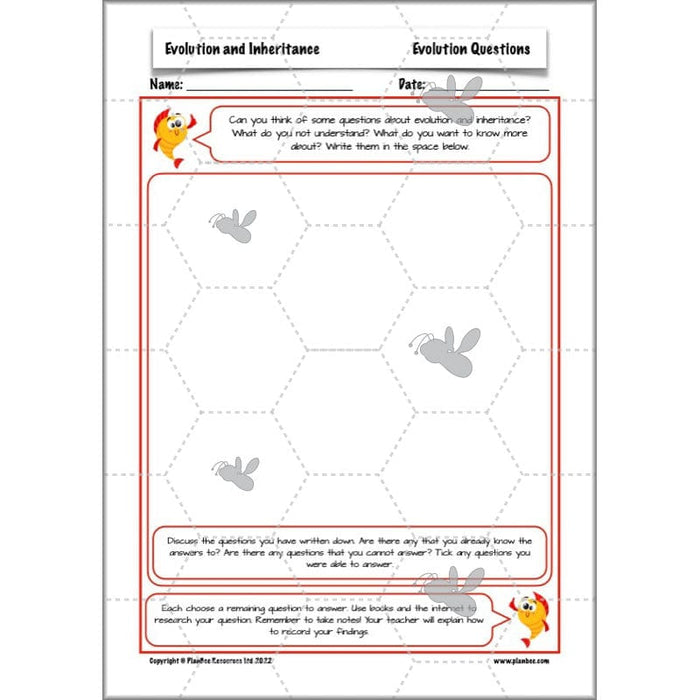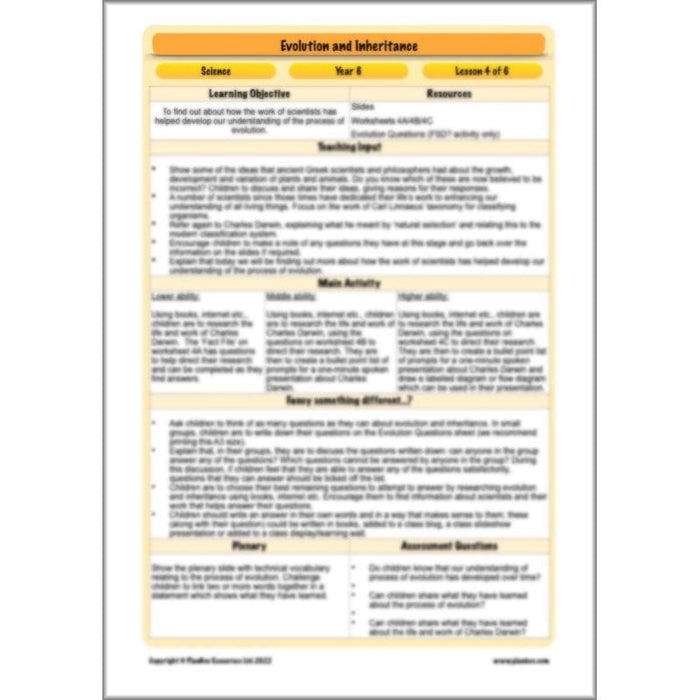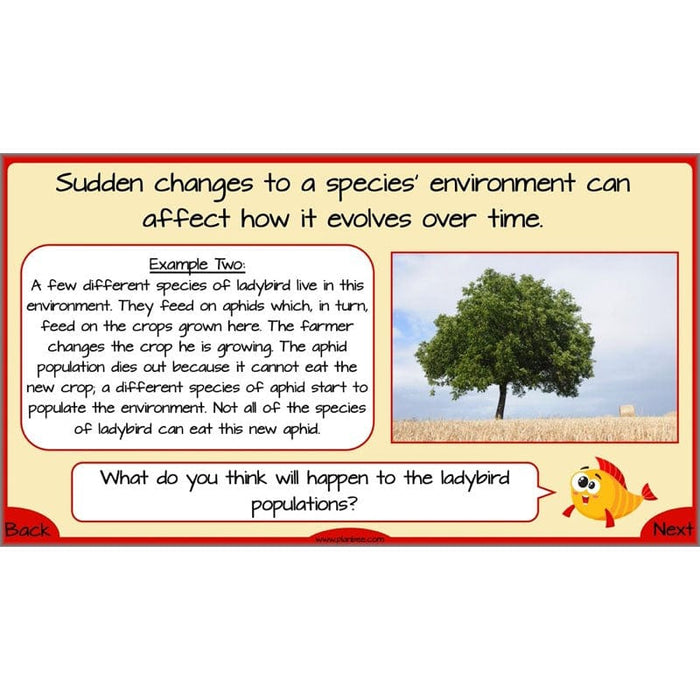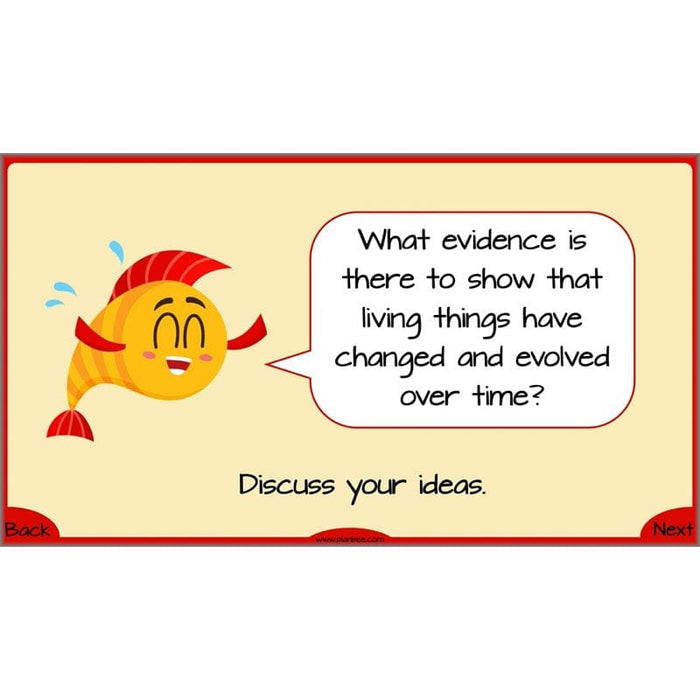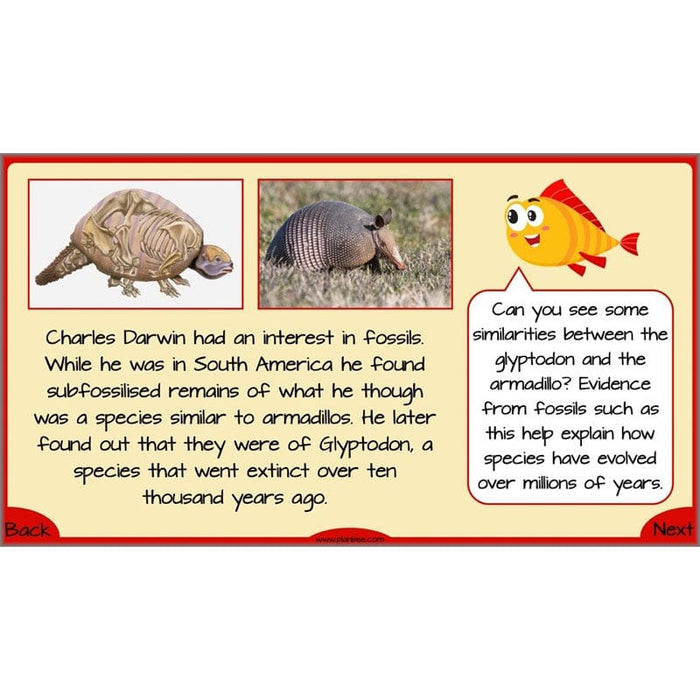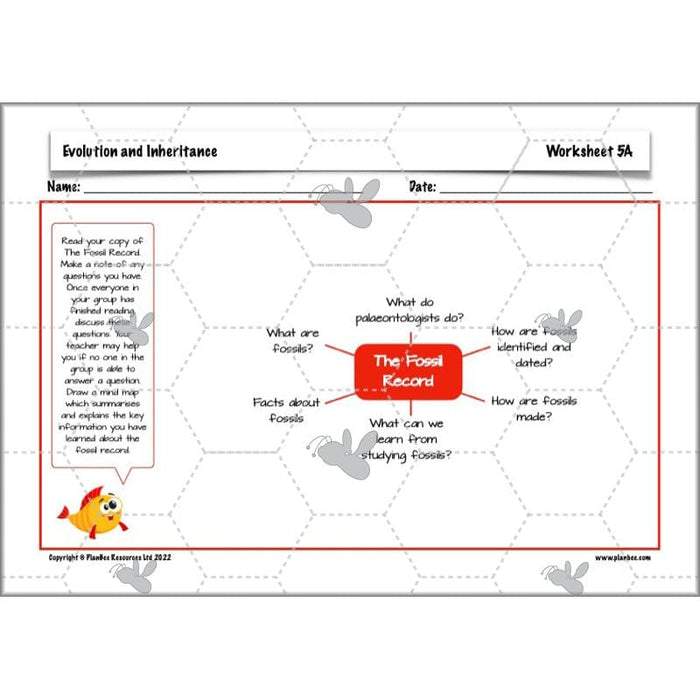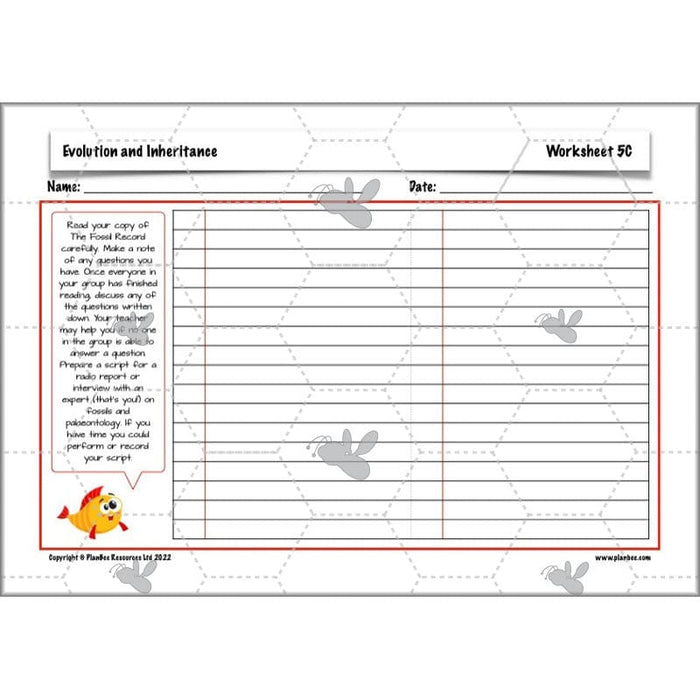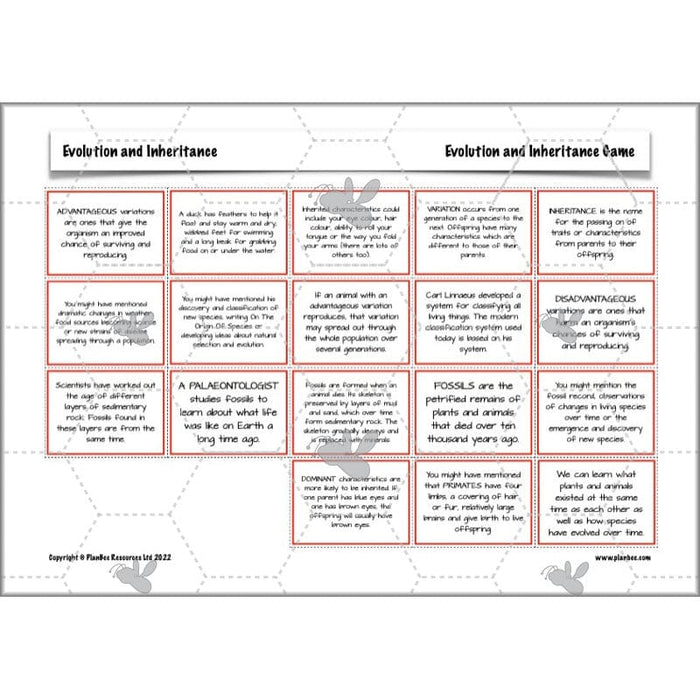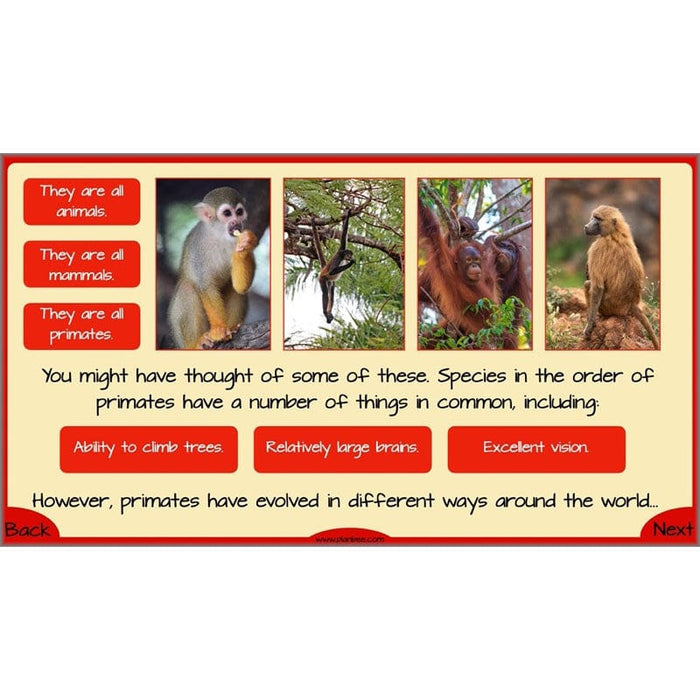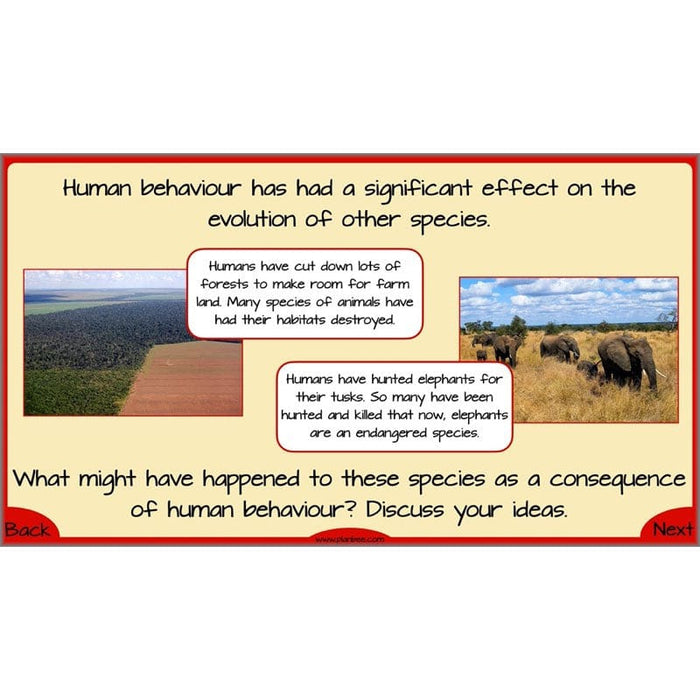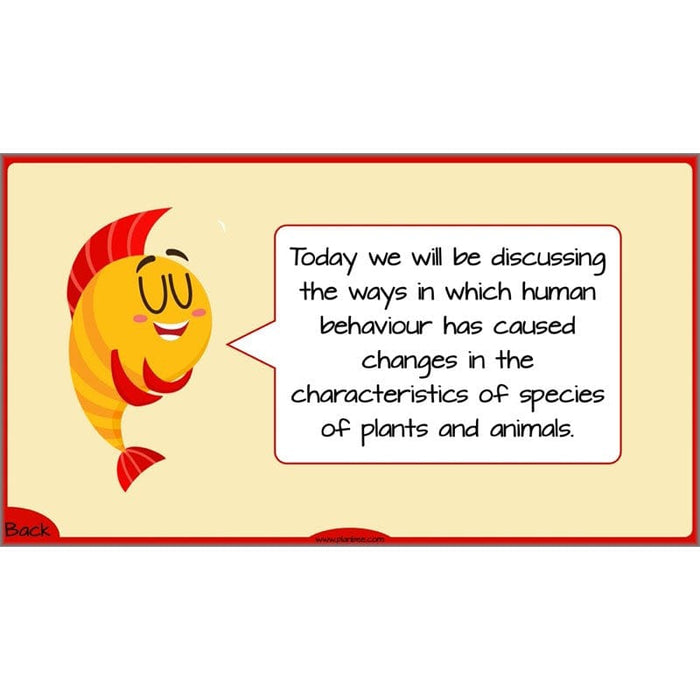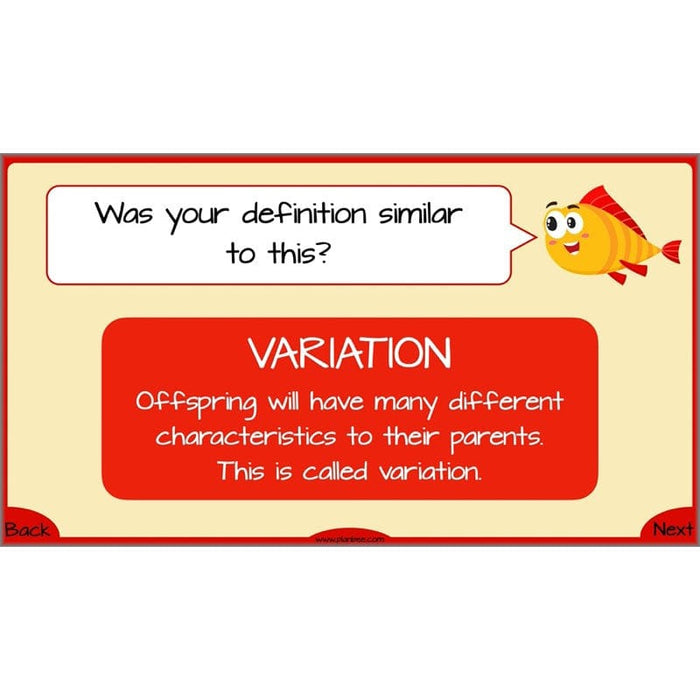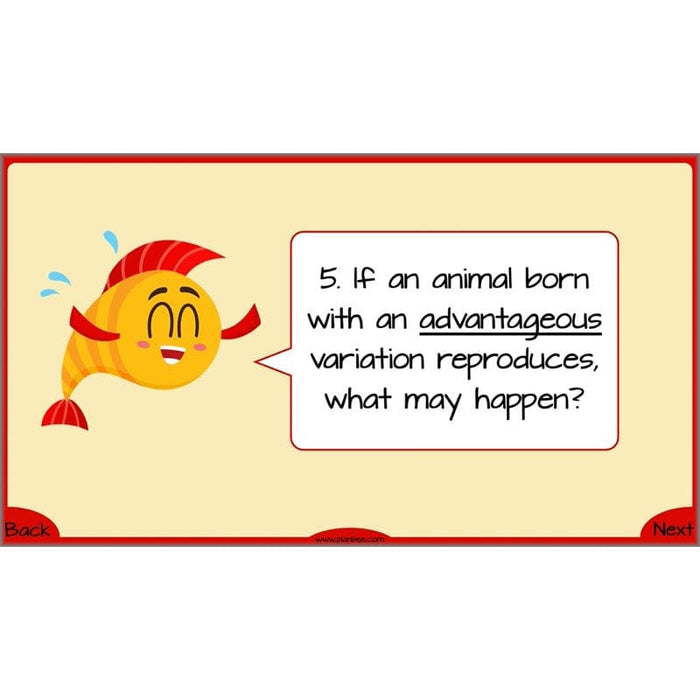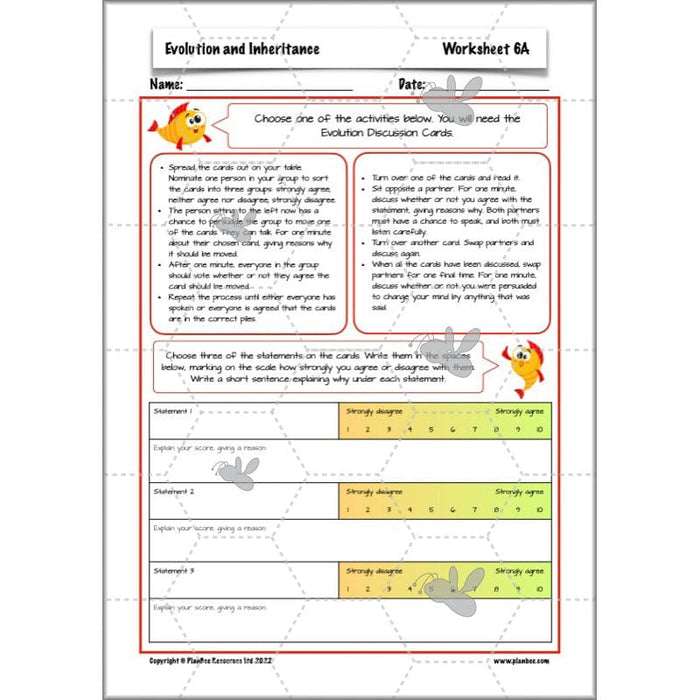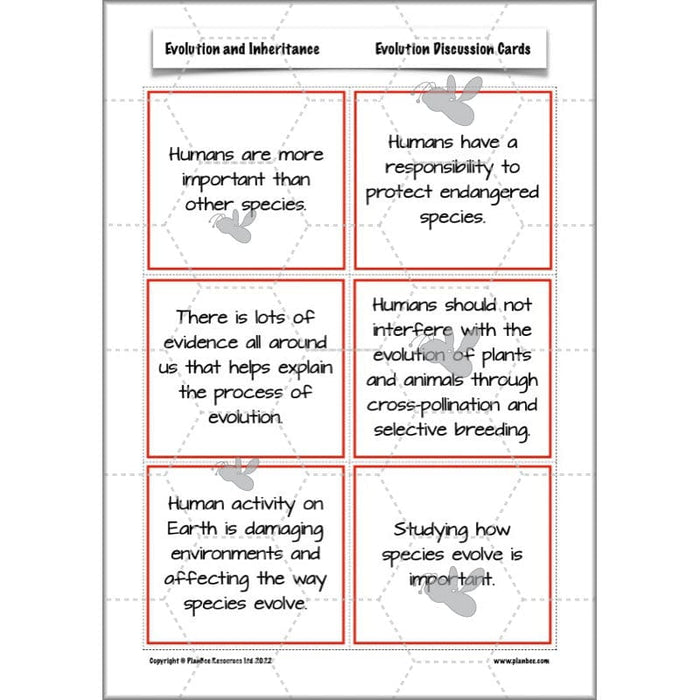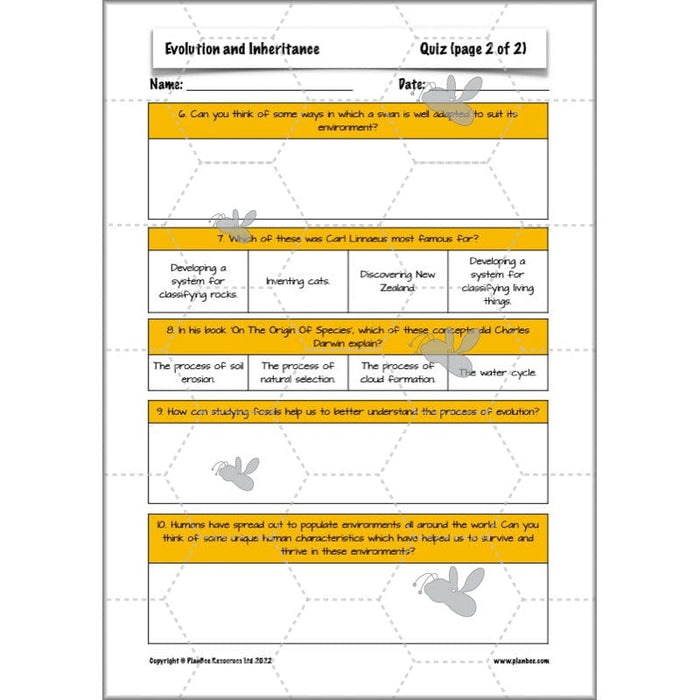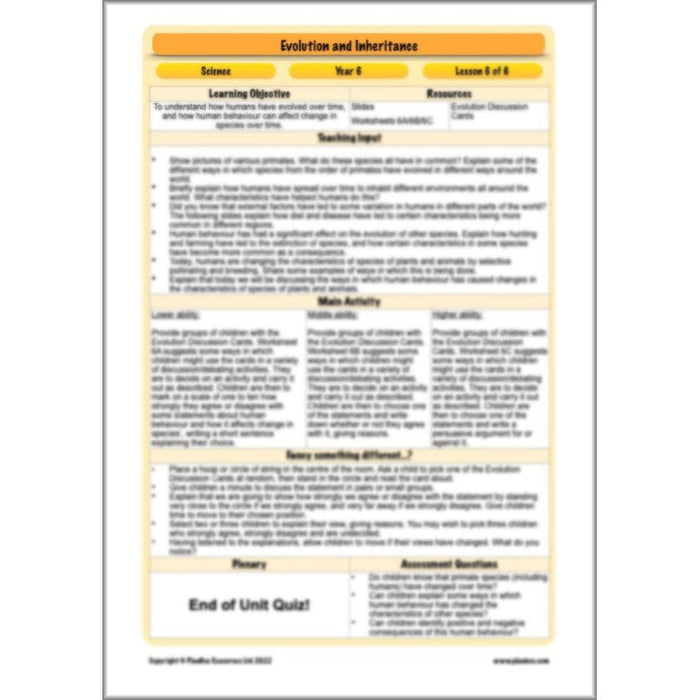#TheCompleteSeries6lessons
With detailed plans (each with a choice of activities), colourful slides with beautiful photographs, differentiated worksheets and many other resources, this Year 6 Evolution and Inheritance KS2 planning pack has everything you need to teach this exciting and complex subject to your children!
#Lesson1InheritedCharacteristics
In this lesson, children will identify traits or characteristics passed from one generation of a species to the next, going on to consider ways in which variation occurs in offspring.
After this, there's a choice of two activities where children may either work independently to identify some family traits, or work in groups to sort themselves according to some given traits or characteristics.
What's included:
- Lesson plan
- Slides
- Differentiated worksheets
- Family Traits sheet
- Inherited Characteristics sheet
#Lesson2AdvantageousAdaptations
Children will begin by learning about the ways in which random mutations result in variations from one generation to the next.
They will go on to consider which variations may be helpful or unhelpful for a species, and what happens as a result of the new variation.
What's included:
- Lesson plan
- Slides
- Differentiated worksheets
- Environment posters
- Advantageous Adaptations sheet
#Lesson3Howlivingthingsevolve
In this lesson, children will learn about what happens if new variations spread through a population over several generations.
They will go on to look at ways in which different species of primate have evolved in different environments.
What's included:
- Lesson plan
- Slides
- Differentiated task charts
- Task instructions
- Task resources
#Lesson4Darwin
Children will begin by finding out about the ideas ancient Greek philosophers and scientists had about life on Earth.
They will go on to look in more detail at the work of Linnaeus and Darwin, before engaging in a research activity to discover for themselves the contribution Darwin made to our understanding of the evolutionary process.
What's included:
- Lesson Plan
- Slides
- Differentiated worksheets
- Evolution Questions sheet
#Lesson5TheFossilRecord
Why do species change over time?
In this lesson, children will learn about some of the external factors affecting a species evolution.
They will then go on to learn about the work of palaeontologists and the evidence of evolution found in the fossil record.
What's included:
- Lesson plan
- Slides
- Differentiated worksheets
- The Fossil Record sheet
- Evolution and Inheritance game
#Lesson6HumanEvolution
At the start of this lesson, children will learn about which adaptations have allowed humans to successfully survive and thrive in environments all around the world.
They will go on to consider the impact of human behaviour on plant and animal populations around the world.
An extra slideshow is included with this final lesson: an End of Unit Quiz to test your children's knowledge!
What's included:
- Lesson plan
- Slides
- Differentiated worksheets
- Evolution Discussion cards
- End Of Unit Quiz slides
Free Overview (Medium-Term Plan)
Download a free overview to support your teaching of this scheme of work.
Free Assessment Grid
Download a free, editable assessment grid to support your teaching of this scheme of work.
Curriculum Objectives covered
Year 5/6 Working Scientifically Objectives
- recording data and results of increasing complexity using scientific diagrams and labels, classification keys, tables, scatter graphs, bar and line graphs
- reporting and presenting findings from enquiries, including conclusions, causal relationships and explanations of and degree of trust in results, in oral and written forms such as displays and other presentations
- identifying scientific evidence that has been used to support or refute ideas or arguments
Year 6 Evolution and Inheritance Objectives
- recognise that living things have changed over time and that fossils provide information about living things that inhabited the Earth millions of years ago
- recognise that living things produce offspring of the same kind, but normally offspring vary and are not identical to their parents
- identify how animals and plants are adapted to suit their environment in different ways and that adaptation may lead to evolution


